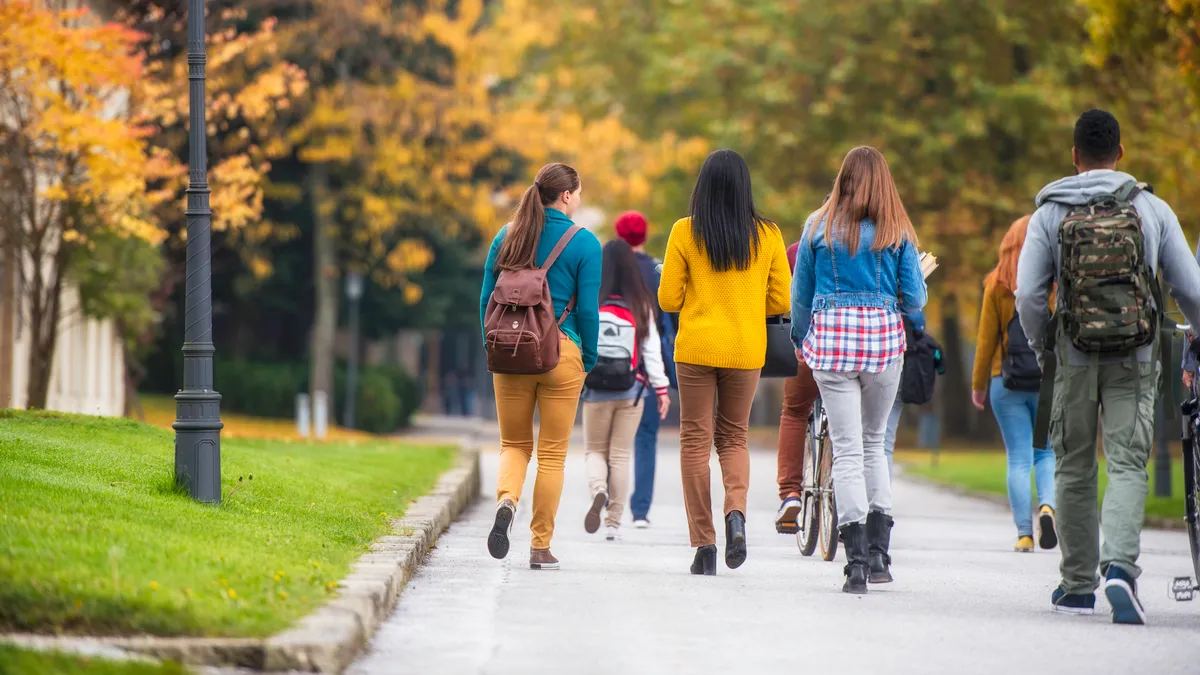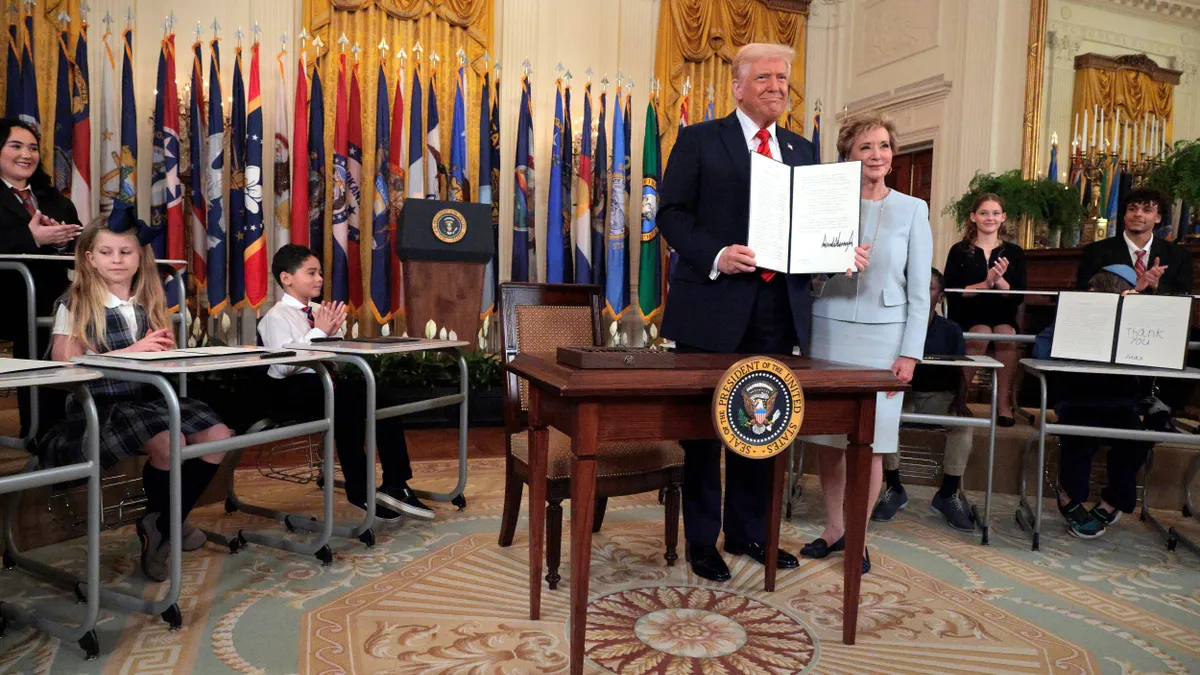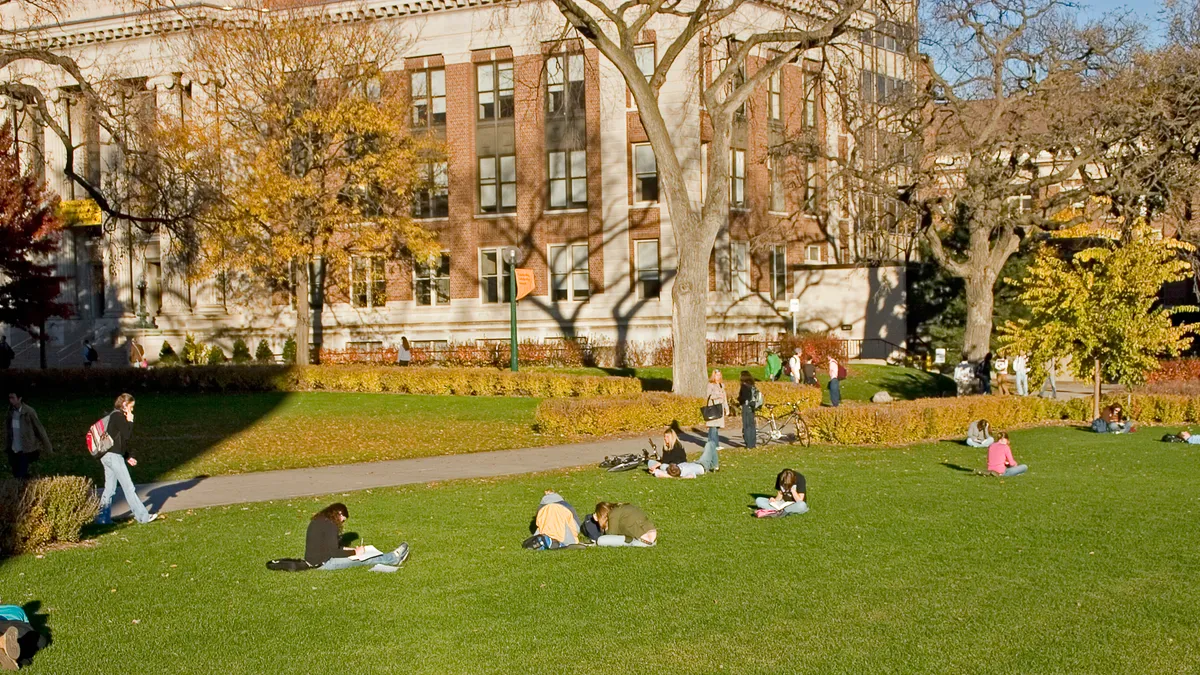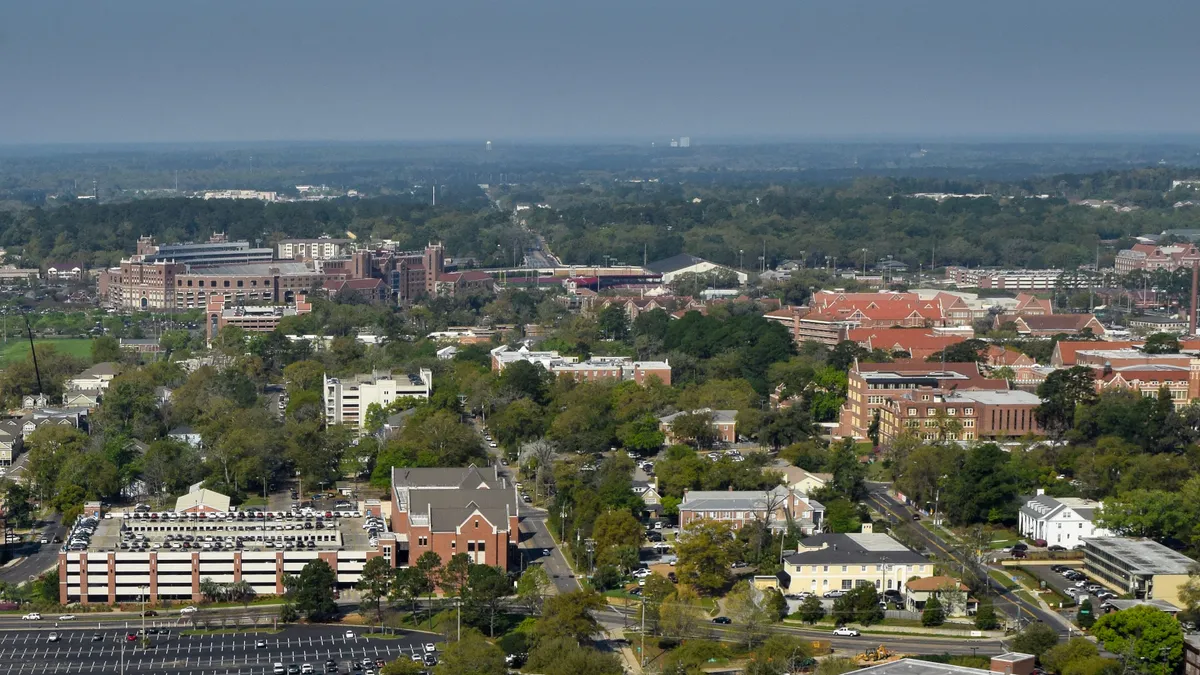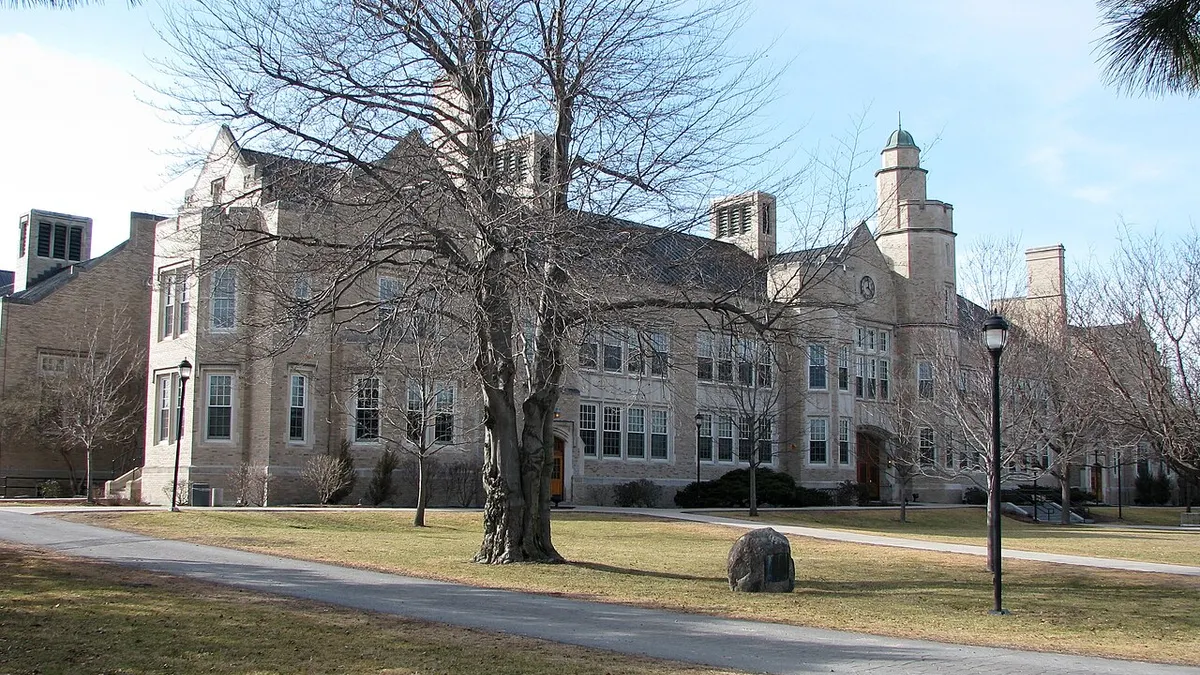Spring enrollment data from the National Student Clearinghouse Research Center brought promising news: The college student population rose 3.2% from the year before, an increase of 562,000 students. Though current enrollment still lags 0.9% behind spring 2020, the improvement brought it the closest it's ever been to pre-COVID numbers.
A closer look at the data shows which student populations grew the most and which regions of the country are on track to recovery from the pandemic-induced dips. Below, we dive deeper into some of the spring semester’s most notable enrollment trends.
Older student enrollment (slowly) on the mend
Year-over-year enrollment change by age
Spring undergraduate enrollment rose across all adult age groups, with the 18- to 20-year-old cohort seeing a third consecutive year of gains. These traditional-aged college students represent about 40% of undergraduates, though higher ed experts have warned that their numbers are likely to decline amid the impending demographic cliff. As a result, some colleges are increasingly looking to older learners as a way to supplement the weakening K-12 pipeline.
Undergraduate enrollment among students ages 25 to 29 has fluctuated significantly since the pandemic, as did enrollment across all ages. But this demographic has been the slowest to recover.
Their enrollment decreased by 5.3% in spring 2023 compared to the year prior. By spring 2024, the worst of their losses appeared to slow, though enrollment for 25- to 29-year-olds still declined by 0.3% annually.
This year showed the first signs of improvement. The number of undergraduate students in their late 20s increased by 5.9% year over year in what the clearinghouse called "the start of a recovery after consistent declines since the pandemic." With the spring 2025 gains, their enrollment still fell 12.6% lower than in spring 2020.
Similarly, students ages 21 to 24 saw their first post-2020 enrollment increase this spring. However, like their slightly older counterparts, they still lag by 6.6% compared to at the start of the pandemic.
Every region in the U.S. makes enrollment gains
Fall 2025 enrollment change year over year by state
All regions of the U.S. and a vast majority of states saw their total college enrollment grow in spring 2025, the clearinghouse found. Enrollment in the South, which rose by 4% over the previous year and outpaced all other U.S. regions, coincided with its states' public colleges reporting enrollment growth despite a challenging landscape.
Georgia, for example, enrolled 5.3% more students in spring 2025 than it had the previous year, according to the clearinghouse. At the same time, the state's public university system reported a 6% annual hike in total enrollment that term, following a similar 5.9% boost in fall 2024.
In North Carolina, the news that total spring enrollment grew 4.7% followed institutional data from fall 2024 — the most recent available — showing the state's community college system increased enrollment by 3.6% and its public four-year institutions grew by 2.2%.
The West experienced a 2.8% year-over-year enrollment growth, while the Midwest reported a 2.6% gain. Colleges in the Northeast also saw a 2% bump — continuing improvements seen in the incredibly dense, competitive market for the first time last year.
Just six states saw enrollment decreases — Idaho, Alaska, Vermont, Oregon, Nebraska and Missouri.
An increasingly diverse student mix
Fall 2025 enrollment growth by race and ethnicity
Spring 2025 brought undergraduate enrollment gains across ethnicity and racial demographics tracked by the clearinghouse. Black students showed the biggest increase, 10.3%, after years of lagging behind most other groups. Undergraduate enrollment among multiracial students likewise expanded by 8.5% year over year.
Enrollment among White students rose by a much smaller percentage, 1.8%, nonetheless signifying the first upturn the group has seen since the start of the pandemic.
The news comes amid increased attention to diversity among students and the means by which colleges foster it. Fall 2024 marked the start of the first cohort of freshmen admitted since the U.S. Supreme Court barred race-conscious admissions practices. The minority of colleges that the ruling affected — those that maintain selective admissions processes — reported mixed outcomes on their class diversity, with Black students representing the biggest loss among racial groups.
Since then, however, conservative policymakers have ratcheted up attacks on diversity efforts at colleges at both the federal and state levels, seeking to make them illegal at publicly funded institutions. The eradication of these programs — and the student support systems they created — has some higher education experts warning of more barriers to college and an increasing potential for attrition among students of color.




